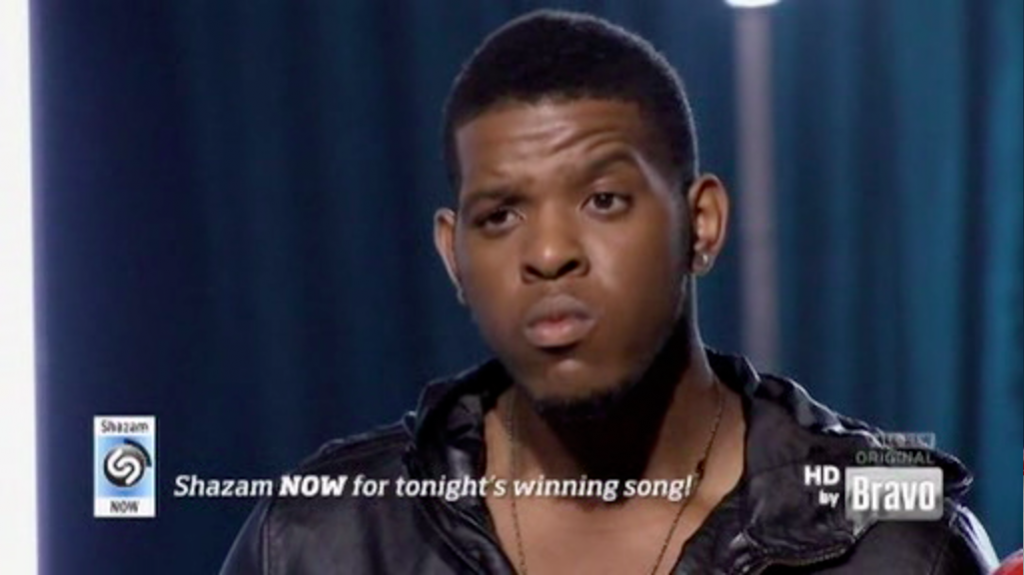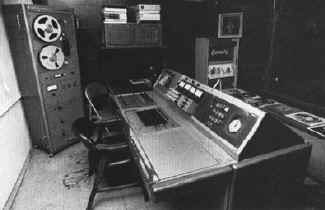Posts Tagged Billie Holiday
Platinum Hit: Under The Hood Of The Music Industry
Posted by Gavin Bradley in Business, Creative, Labels, Publishing, Writing on August 3, 2011
I am LOVING this show. For all the wrong reasons.
I’m not a fan of the Idol franchise because it’s put in place a concrete, standardized checklist by which the general public believes singers should be judged. The idea, alone, that a vocalist should display versatility within a range of genres disqualifies the Billie Holidays and Neil Youngs of the world.
Before Idol, artists signed to labels existed in a reality parallel—but separate from—the rest of the world. Someone who ‘knew something about music’ had given the stamp of approval, pulled all the levers, and forevermore the glossy finish of album jackets and posters would seal that artist away, just out of fans’ reach. Talent was curated primarily by savvy executives like Clive Davis and Ahmet Ertegun, who certainly had a basic checklist for their signings (‘Can Sing,’ ‘Has A Look,’ ‘Has Presence Live.’) But, with a similar latitude that radio DJs had decades ago, one tastemaker’s gut instinct could play a large part in an artist’s destiny.
Today, with profits plunging and monster record labels merging to survive, indie labels have risen again to service niche markets while the majors pump out increasingly formulaic product. Those executives simply cannot afford to experiment, so clunky corporate procedure is de rigueur. I’m loving Bravo’s new reality series Platinum Hit because, perhaps for the first time, the curtain has been pulled back…the average music fan can get a relatively true-to-life view of the working parts inside the LA machine.
Appropriately, fallen singer-songwriter Jewel hosts. Her mis-step in 2003 with dance-pop single Intuition alienated her audience after her earthy image had been solidified with five ubiquitous alt-country radio singles. (We certainly saw under the hood of the industry for a moment there.)
The show is a competition in which 12 songwriters get thrown in rooms in various combinations to come up with hit songs…usually with a specific topic or genre, and sometimes for a specific artist. They work against the clock to deliver material to a panel of executives who then analyze the structure, melody, lyrics and chord changes to measure market potential.
This is exactly what goes on in Los Angeles.
I’m into this show because the corporate standardization of songwriting is in plain view. Heavyweight-songwriter-turned-reality-TV-judge Kara DioGuardi lobs constructive advice at the contestants, guiding them on how to get a green light from executives. Label-executive-turned-reality-TV-judge Keith Naftaly’s feedback often hinges on how well the song hits a market demographic. When in Episode 9 he told contestant Scotty Granger that he believes the lyrical content of his dance song is a little deep for high school kids, my eyes nearly rolled out of my head.
This is the type of ‘dumb-it-down’ thinking that permeates the industry. Scotty’s song was barely ‘deep’—in its narrative, we find out there’s just one day left on earth and everyone’s decided to dance all night. A bit dark, maybe, but hardly deep, and quite appropriate for the angst high school kids feel. Maybe this is why Britney Spears’ conceptually identical single ‘Until The World Ends,’ tore up the charts recently.
Regardless, kids, like anyone else, sense when they’re being talked down to, and this usually results in them finding a counter-culture that reflects their feelings more honestly. I remember a DJ friend pointing out to me that in the early 80s MTV was the only source for music videos, so all demographics were exposed to everything from Kate Bush to Run DMC. No one suffered from it. To the contrary, I believe it was a time of rich musical cross-pollination.
The last few episodes of Platinum Hit have gone slightly off the rails in the sense that contestants have clearly been eliminated not based on the quality of their songwriting but rather in order to maintain dramatic tension between characters: this still has to be entertaining TV. Nowhere was it more blatantly obvious than in shots of Granger’s own disbelief at having his song—which he had just described as unsuccessful—come in first at the end of an episode.
Artificially-imposed narrative aside, Platinum Hit is an interesting first glimpse into the world of beatmakers and topliners. The role of melodies, titles, song concepts, and chord changes is contextualized within the construction of a successful artist’s facade, giving some much-needed perspective on all that’s behind the front end of hit music.
The final episode of Season 1 airs this Friday August 5th.
Breakin’ Dishes: Capturing Sound Not So Perfectly
Posted by Gavin Bradley in Production on June 7, 2009
When somebody drops a glass or breaks a plate in the apartment next door, you know it’s happening for real–and not in a surround-sound movie they’re watching–because what we can capture on disc is still slightly lower quality than real life sound.
Since the first recordings made on cylinders in the late 1800s we’ve always pressed forward, unquestioningly, in our efforts to close the gap between ‘live and memorex’. Technologists, engineers and audiophiles have fought tirelessly to further extend the frequency range, dynamics and resolution of recordings. In the late 80s the jump to digital recording brought us infinitely closer to being able to reproduce sound without colouration of any kind, and science continues to improve upon the resolution of digital with the goal, I suppose, of having there be no discernable difference between real and reproduced sound.
This has been amazing for action movies. In some instances crisp, clear recordings with deep bass, pristine treble, wide spatial staging and infinite dynamic range should be the goal. But there is also a powerful group of mostly old-school music producers–the David Foster types, the Nashville types–that in my opinion have chosen to use the widescreen ‘colourless’ nature of digital to strip mainstream recordings of much of their character.
Looking back on pop culture over the last hundred years, some of what we hold dearest is that which we can’t quite ‘touch’…that which is partially obscured because it wasn’t captured realistically.
When we watch a black and white movie from the 1930s, a technicolor movie from the 1950s, or even a film shot on washed out Kodakchrome/Eastman stock from the 1970s, we’re losing ourselves in a world that is not quite our own…it’s a romanticized version of life brought to us in part due to a lack of honest colour information.
Similarly, when we listen to classic Motown, with its boxy sounding drums, distorted tambourines and general sonic blurriness, we’re transported to that sweaty basement in Detroit where players and singers delivered magic. And it’s not just nostalgic in retrospect. I maintain that it was already full of nostalgia when it first hit the radio precisely because it didn’t sound like real life: the very character of the sound stoked our collective imagination as to where this musical spirit was coming from.
If music is a window into other peoples’ real and imaginary worlds, why is there so often a de facto assumption that we even want it to sound true-to-life? And, once it’s possible to record sound at real-life resolutions, does that mean we’ll cease to experience decade-specific nostalgia as, moving forward, sound is always perfectly colourless?
I always tend to appreciate the planned or accidental limitation of sound quality, like a good pair of distressed jeans. I don’t feel that the most expensive microphone, the biggest mixing desk, or the greatest clarity and sonic detail should always be the goal. Capturing a moving performance should be first, and if a lower end microphone is all that was around when it happened, I don’t believe the artist should re-perform it on a $17k Neumann tube mic. In fact maybe a Fisher Price microphone should be plugged in now and again to see what will happen.
Some examples of intentionally and unintentionally ‘distressed’ recordings through the ages:
1. Billie Holiday’s 1935 recording ‘It’s Too Hot For Words’ was of course cut on a shellac disc using relatively primitive equipment. The dated style of the recording–the distortion and lack of bass and treble information–renders her forever untouchable, a tragic legend.
2. On ‘Strangers,’ the third track on Portishead’s 1994 groundbreaking debut disc ‘Dummy’, after a full frequency sonic barrage of an intro we plunge unexpectedly into what appears to be an improvised demo jam made on a handheld cassette recorder. Muted, distorted and noisy, Adrian Utley’s soulful jazz electric supports some of Beth Gibbons’ most shimmering vocal moments. This section of the song may in fact have been laboured over on high end recording equipment and then played back through a distorted guitar amp to achieve this effect…we may never know. By verse 2 we’re back in 1994 standards of high definition audio.
3. Throughout the 1990s layering vinyl surface noise over highly produced rap, R&B and pop was a common move to get back some of the nostalgia that seemed to be lacking on pristine digital recordings. 1996’s ‘No Love’ by Erykah Badu demonstrates the tactile feel of vinyl, as well as an intro section where the bass and treble are also filtered out of the music to make it sound lo-fi. When the track kicks in (and the filters are removed) note that the quality of the instruments is uncompromised by the vinyl pops we hear over top. This gave 1990s recordings a different feel than old recordings on actual damaged vinyl, because each click or pop on a record would actually distort the sound quality of the musical elements as it happened.
4. UK dubstep producer Burial puts down a bed of heavy, stuttering beats. On that he places a wax paper layer of lush, filmic ambient pads. Next, he sprinkles obscure mix-and-match R&B acapellas, filtering out the treble to create lyrical ambiguity. Finally he wraps the whole thing in a layer of sonic gauze using an expanded palette of crackle, ranging from standard vinyl crackle and tape hiss to rustling sounds and recordings of fire. The result, heard here on a drumless segue after ‘Shell Of Light’ on his 2008 album ‘Untrue’, is something like witnessing a merciful event through a frosted window.
These are all analog methods of bringing character to recordings: the limitations of vinyl, tape and guitar amps. But in the early part of this century we’ve seen some indication that producers will continue to time-stamp recordings by beginning to find useable limitations within the digital realm. For example, the glassy digitized sound of low quality mp3s has inspired some producers (most notably Mirwais, who produced Madonna’s ‘Music’ and ‘American Life’ albums…and of course Daft Punk) to apply similar lo-fi digital effects to vocals and music loops.
This type of experimentation gives me hope, in the digital age, that we won’t be listening to the silky smooth sound of David Foster muzak for the rest of eternity.





